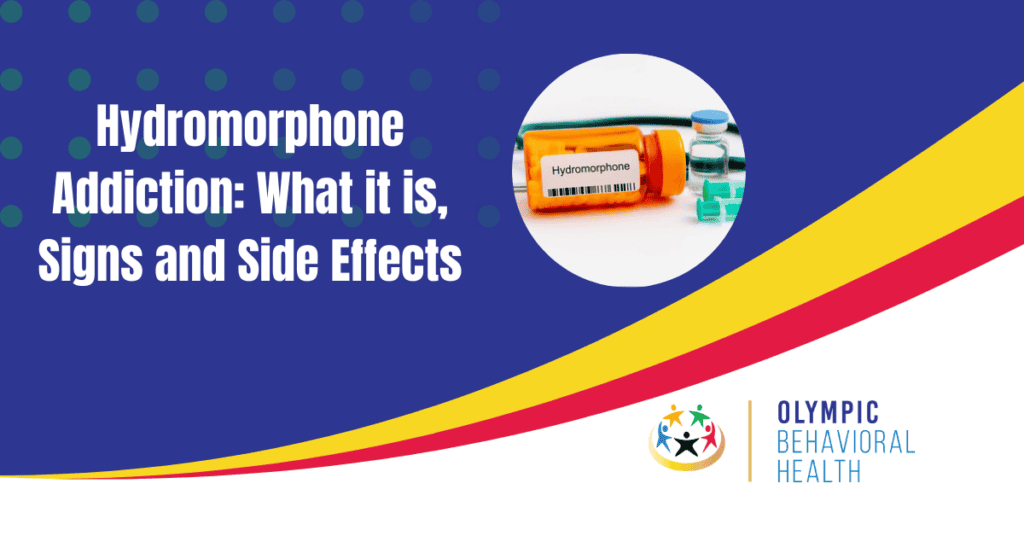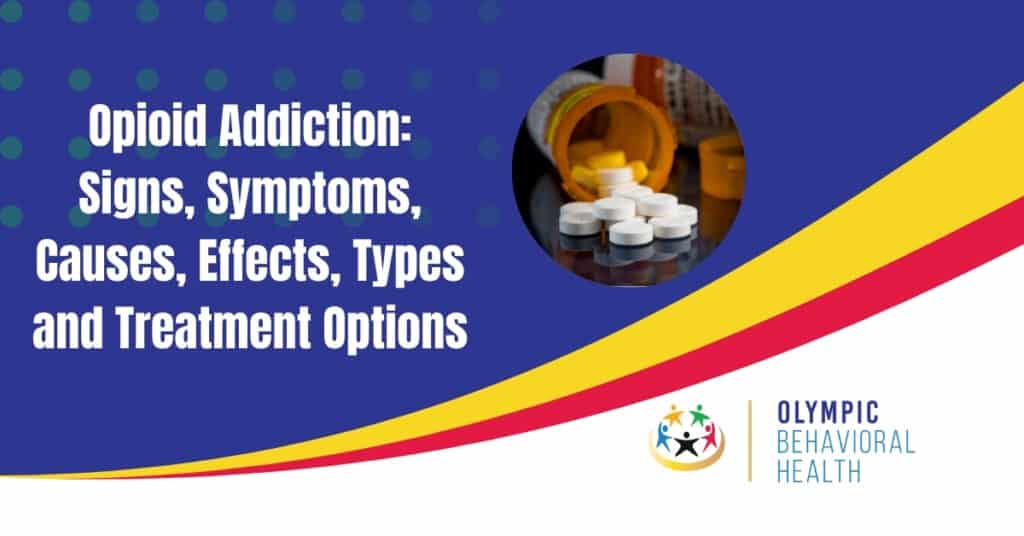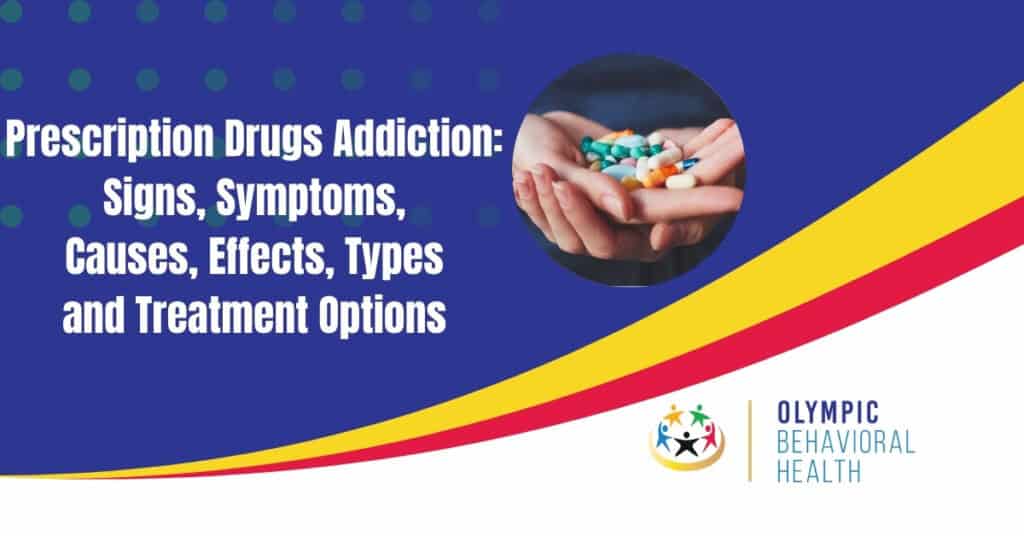Hydromorphone addiction, also known as addiction to hydromorphone, is a condition that occurs when an individual becomes dependent on this potent opioid medication. This addiction is characterized by a compulsive urge to use the drug, despite the harmful consequences it may bring. Recognizing the signs and side effects of hydromorphone addiction is crucial in order to provide timely intervention and support.
What is Hydromorphone?
Hydromorphone is a potent opioid medication used to treat severe pain. It is derived from morphine and acts on the central nervous system to relieve pain. Hydromorphone is available in tablet, capsule, and injectable forms.
Hydromorphone binds to opioid receptors in the brain and body, blocking pain signals and providing pain relief. It also causes sedation, euphoria, and respiratory depression.
Use hydromorphone only under the supervision of a healthcare professional to avoid addiction and misuse. It is typically prescribed for short-term use or when other pain medications are ineffective. The dosage and frequency depend on the individual’s pain severity and response.
Follow the prescribed dosage and do not exceed the recommended amount to avoid addiction, overdose, and severe side effects.
Common side effects include drowsiness, constipation, nausea, vomiting, and dizziness. These side effects are more likely at the beginning of treatment but usually improve with time. If they persist or worsen, consult a healthcare professional.
Do not take hydromorphone if you have a history of drug addiction, respiratory problems, or certain gastrointestinal conditions. It can interact with other medications, causing increased drowsiness and respiratory depression.
Understanding Hydromorphone Addiction
Understanding hydromorphone addiction is crucial in order to provide appropriate support and help to those who are struggling with it. Hydromorphone, also known as Dilaudid, is a potent opioid analgesic prescribed for severe pain, such as that experienced by cancer patients or individuals recovering from major surgeries. However, misuse and abuse of hydromorphone can lead to addiction.
Addiction to hydromorphone can develop due to various factors. One key factor is the drug’s ability to produce feelings of euphoria and relaxation, motivating individuals to seek out and continue using the drug. Additionally, long-term use of hydromorphone can lead to physical dependence, where the body adapts to the drug and requires it to function normally.
It is important to note that addiction is influenced by biological, psychological, and social factors. Genetic predisposition and a history of substance abuse can increase the risk of developing hydromorphone addiction. Additionally, individuals with mental health conditions, such as depression or anxiety, may be more vulnerable to substance abuse.
Recognizing the signs of hydromorphone addiction is crucial for early intervention. Common indicators include a strong craving for the drug, the inability to control or stop its use, and continued use despite negative consequences. Physical symptoms such as withdrawal symptoms when attempting to quit or reduce use may also be present.
Treating hydromorphone addiction typically involves behavioral therapies, support groups, and sometimes, medication-assisted treatment. The goal is to help individuals overcome their addiction, manage withdrawal symptoms, and develop strategies to prevent relapse.
Education and awareness play a significant role in preventing and addressing hydromorphone addiction. Healthcare professionals should ensure patients are adequately informed about the risks of hydromorphone and the importance of using it only as directed. Additionally, promoting alternative pain management strategies and non-opioid pain relievers can help reduce reliance on hydromorphone and minimize the risk of addiction.
Understanding hydromorphone addiction is essential for healthcare professionals, patients, and society as a whole. By recognizing the risk factors, signs, and treatment options for addiction, we can work towards preventing substance abuse and providing compassionate support to those in need.
What are the Risk Factors for Hydromorphone Addiction?
The risk factors for hydromorphone addiction include:
-
Previous substance abuse: Individuals with a history of opioid or other drug abuse are at a higher risk of hydromorphone addiction.
-
Genetics: Evidence suggests a genetic predisposition to addiction, including hydromorphone addiction.
-
Mental health conditions: Co-occurring mental health conditions like depression or anxiety can increase vulnerability to hydromorphone addiction as a coping mechanism.
-
Environmental factors: Factors such as growing up in a substance-abusing home, social pressure, or exposure to a drug-using environment can increase the risk of hydromorphone addiction.
-
Chronic pain: Hydromorphone is commonly prescribed for managing chronic pain, putting individuals relying on it at a higher risk of addiction.
-
Dosage and duration of use: Taking hydromorphone in higher doses or beyond prescribed duration can increase the risk of addiction.
-
Peer influence: Being surrounded by friends or acquaintances who misuse hydromorphone or other substances can influence drug misuse.
-
Lack of social support: Individuals lacking strong social support systems or resources for managing stress or emotional difficulties may be more susceptible to hydromorphone addiction.
Pro-tip: If you or someone you know is at risk of hydromorphone addiction, seek professional help and support. Treatment options like medical detoxification, inpatient rehabilitation, and outpatient rehabilitation can provide necessary support and guidance to overcome addiction.
What are the Signs and Symptoms of Hydromorphone Addiction?
Signs and Symptoms of Hydromorphone Addiction:
– What are the Signs and Symptoms of Hydromorphone Addiction? Lack of control: Individuals addicted to hydromorphone may struggle to limit their drug use. They may exceed prescribed doses or use it more frequently than intended.
– Intense cravings: One sign of hydromorphone addiction is strong, recurrent urges to use the drug. These cravings are difficult to resist.
– Physical dependence: Regular use of hydromorphone can lead to physical dependence, where the body becomes accustomed to the drug. Stopping or reducing use may result in withdrawal symptoms like nausea, sweating, and muscle aches.
– Tolerance development: Over time, hydromorphone addicts may require higher doses for desired effects, increasing the risk of overdose.
– Neglecting responsibilities: Hydromorphone addiction can interfere with fulfilling obligations at work, school, or home. Important tasks and relationships may be neglected for the sake of obtaining and using the drug.
– Continued use despite consequences: Addicts may persist in hydromorphone use even when facing negative consequences such as legal issues, financial problems, or declining health.
– Withdrawal symptoms: When attempting to quit hydromorphone, individuals may experience withdrawal symptoms like agitation, insomnia, anxiety, and sweating.
– Isolation and secrecy: People struggling with hydromorphone addiction may isolate themselves from friends and family, avoiding social interactions. They may also engage in secretive behaviors to hide their drug use.
– Loss of interest: Addiction can result in a loss of interest in once enjoyable activities or hobbies. Individuals may solely focus on obtaining and using hydromorphone.
– Financial problems: Hydromorphone addiction can be financially burdensome, with individuals spending significant amounts of money to obtain the drug. This could lead to financial difficulties and resorting to illegal activities to support their addiction.
If you or someone you know shows signs of hydromorphone addiction, it is crucial to seek help from a healthcare professional or specialized addiction treatment center. They can provide guidance, support, and tailored treatment options. Remember, addiction is treatable, and recovery is possible with the right support and treatment.
The Side Effects of Hydromorphone
Hydromorphone, a powerful medication used for pain management, comes with a range of side effects that demand our attention. In this section, we’ll explore the side effects of hydromorphone, shedding light on both the common and the more severe impacts it can have on individuals. Brace yourself as we delve into the potential consequences of this medication, backed by real-life experiences and expert insights. Get ready to uncover the hidden dangers that lurk behind the benefits of hydromorphone.
Common Side Effects of Hydromorphone
Common Side Effects of Hydromorphone
- Nausea: Hydromorphone can cause nausea, accompanied by queasiness or an upset stomach.
- Constipation: Hydromorphone slows down the digestive system, causing constipation.
- Drowsiness: Hydromorphone often causes drowsiness or sedation, making it hard to stay awake and concentrate.
- Dizziness: Hydromorphone can lead to dizziness or lightheadedness, increasing the risk of falls or accidents.
- Headache: Hydromorphone may result in headaches, ranging from mild to severe, along with sensitivity to light or noise.
- Itching: Hydromorphone can cause itching or a rash, which may require additional treatment.
- Dry mouth: Hydromorphone can lead to dry mouth, making it difficult to speak or swallow and increasing the risk of dental problems.
- Sweating: Hydromorphone commonly causes excessive sweating, accompanied by cold or clammy skin.
- Urinary problems: Hydromorphone can cause changes in urinary function, such as difficulty urinating or increased frequency.
- Respiratory depression: Hydromorphone can cause respiratory depression, characterized by slow and shallow breathing, requiring immediate medical attention.
These are some of the common side effects of hydromorphone. Not everyone will experience these side effects, and individuals may have different or additional side effects. If you have any concerns or questions, consult a healthcare professional.
Severe side effects of Hydromorphone: Just when you thought constipation and drowsiness were bad, this powerful painkiller also brings you the bonus of potential respiratory depression and addiction.
Severe Side Effects of Hydromorphone
Severe Side Effects of Hydromorphone
- Respiratory depression: Severe side effects of hydromorphone can include slow and shallow breathing, leading to decreased oxygen levels in the body and potentially life-threatening.
- Allergic reactions: Some individuals may experience severe allergic reactions to hydromorphone, such as skin rashes, itching, swelling, or difficulty breathing. Seek immediate medical attention if signs of an allergic reaction occur.
- Sedation: Hydromorphone can cause excessive drowsiness and sedation, impairing cognitive functions, coordination, and daily tasks. Avoid activities that require alertness while taking hydromorphone.
- Confusion and disorientation: Severe side effects of hydromorphone can include confusion, disorientation, and changes in mental status. These effects can be particularly dangerous for older individuals or those with cognitive impairments.
- Dizziness and fainting: Hydromorphone can cause dizziness and fainting due to its impact on blood pressure regulation. Be cautious when changing positions to prevent falls or accidents.
- Constipation: Hydromorphone, like other opioids, can lead to severe constipation. Maintain a high-fiber diet, drink plenty of fluids, and use stool softeners or laxatives, if necessary.
- Decreased heart rate: High doses of hydromorphone can cause bradycardia (decrease in heart rate), resulting in lightheadedness, fatigue, and potential heart complications. Monitor heart rate while using this medication.
- Withdrawal symptoms: Prolonged and high-dose use of hydromorphone can lead to dependence and withdrawal symptoms, such as flu-like symptoms, muscle aches, anxiety, and drug cravings. Medical supervision may be necessary during withdrawal.
It is crucial to be aware of these severe side effects of hydromorphone and seek medical attention if any occur. If you or someone you know is struggling with hydromorphone addiction, seek treatment and support from healthcare professionals. Recovery programs like medical detoxification, inpatient rehabilitation, and outpatient rehabilitation can effectively manage addiction. Additionally, education, awareness about the risks of hydromorphone abuse, support groups, and healthy coping mechanisms can help prevent and overcome addiction. Remember to take medications as prescribed and seek guidance for severe side effects.
Treatment for Hydromorphone Addiction
Seeking effective treatment for hydromorphone addiction? Discover the path to recovery in this section. Explore the options of medical detoxification, inpatient rehabilitation, and outpatient rehabilitation, each offering a unique approach to overcoming addiction. Uncover the facts, figures, and success stories that can guide you towards a brighter, drug-free future. Let’s delve into the world of hydromorphone addiction treatment and find the support you need.
Medical Detoxification
Medical detoxification, also known as medical detox, is a crucial aspect of hydromorphone addiction treatment. It plays a vital role in helping individuals safely and gradually eliminate the drug from their system, while effectively managing withdrawal symptoms and minimizing potential complications.
Throughout the process of medical detox, individuals are closely monitored by healthcare professionals who specialize in addiction medicine. This ensures that their well-being is closely observed and that any potential issues can be addressed promptly. Typically, medical detox involves the utilization of medications that aid in easing withdrawal symptoms, thereby enhancing safety and comfort.
Medical detox is not a one-size-fits-all approach, but rather an individualized treatment tailored to each person’s specific needs. Factors such as the severity of addiction, overall health, and the presence of any co-occurring physical or mental conditions can influence the duration and intensity of detox.
One of the primary advantages of medical detox is that it provides a supportive and controlled environment for individuals to undergo a safe withdrawal from hydromorphone. It effectively manages various symptoms commonly associated with withdrawal, including nausea, vomiting, diarrhea, muscle aches, and anxiety. Additionally, medications can be prescribed to help reduce cravings and prevent relapse during this critical period.
However, it is important to note that medical detox is merely the initial step in a comprehensive hydromorphone addiction treatment plan. Following detoxification, individuals often proceed with inpatient or outpatient rehabilitation programs. These programs offer a more holistic approach, providing comprehensive support and therapy to address the underlying causes of addiction and develop effective coping skills for long-term recovery.
Rehab: where hydromorphone addiction goes to get a reality check.
Inpatient Rehabilitation
Throughout inpatient rehabilitation, individuals reside in a residential facility and receive continuous care and support. This creates a secure and controlled environment, away from the temptations and triggers of everyday life. The duration of inpatient rehabilitation varies based on individual needs and progress.
A major benefit of inpatient rehabilitation is the individualized treatment approach. Participants engage in both individual and group therapy sessions to delve into the underlying causes of addiction and develop coping mechanisms to prevent relapse. Therapists and counselors employ evidence-based techniques to address the psychological, emotional, and behavioral aspects of addiction.
In addition to therapy, inpatient rehabilitation focuses on the physical and medical aspects of addiction. Healthcare professionals supervise medical detoxification to manage withdrawal symptoms. Medications may be utilized to alleviate discomfort and reduce cravings.
During inpatient rehabilitation, individuals also have access to holistic therapies and activities like yoga, meditation, art therapy, and exercise programs. These activities foster a sense of well-being and contribute to overall recovery.
Support and aftercare planning play vital roles in inpatient rehabilitation. Individuals are linked to support groups and community resources to receive ongoing guidance and assistance during their recovery journey. The ultimate goal is to equip individuals with the tools and skills necessary to maintain sobriety after completing the inpatient program.
Inpatient rehabilitation has demonstrated effectiveness in helping individuals conquer hydromorphone addiction and achieve enduring recovery. It provides a supportive and structured environment where individuals can fully concentrate on recovery and develop the essential skills to rebuild their lives. If you or someone you know is struggling with hydromorphone addiction, seeking inpatient rehabilitation may be the most suitable course of action to regain control and move towards a healthier future.
Outpatient Rehabilitation
Outpatient rehabilitation is a treatment option for individuals struggling with hydromorphone addiction. It offers support and care while allowing patients to remain in their homes and meet their daily responsibilities. Here are some key points to consider about outpatient rehabilitation:
– Flexible schedule: Outpatient rehabilitation provides the flexibility to schedule treatment sessions around work or school commitments. This makes it an ideal choice for individuals who cannot commit to full-time inpatient treatment.
– Personalized treatment: Outpatient programs design treatment plans based on each individual’s specific needs. These plans may include therapy sessions, counseling, group support, and evidence-based approaches to tackle addiction and promote recovery.
– Maintaining a support network: By opting for outpatient rehabilitation, individuals can continue to receive support from their friends, family, and community. This support network plays a crucial role in the recovery process by providing encouragement and holding patients accountable.
– Life skills development: Outpatient programs often incorporate life skills development into the treatment plan. This may involve coping mechanisms, stress management techniques, relapse prevention strategies, and adopting healthy lifestyle habits. These skills are vital for long-term recovery.
– Regular monitoring and accountability: Outpatient rehabilitation involves regular check-ins, drug testing, and monitoring to ensure that individuals stay committed to their recovery journey and remain drug-free.
It is important to note that outpatient rehabilitation may not be suitable for everyone. Individuals with severe addiction, co-occurring mental health disorders, or unstable living conditions may benefit more from inpatient or residential treatment. The decision should be made in consultation with healthcare professionals and addiction specialists.
Fun fact: According to a study published in the Journal of Substance Abuse Treatment, outpatient rehabilitation has been proven effective in reducing drug use and improving treatment outcomes for individuals with substance use disorders.
Prevention and Support for Hydromorphone Addiction: Because knowledge is power, education and awareness are the first steps towards breaking free from the clutches of hydromorphone.
Prevention and Support for Hydromorphone Addiction
Looking to prevent and provide support for hydromorphone addiction? Delve into the world of education and awareness, support groups, and healthy coping mechanisms. Learn how to raise awareness about the dangers of hydromorphone addiction, discover the power of community support, and explore effective ways to cope with the challenges of addiction. It’s time to take action and make a difference.
Looking to prevent and provide support for hydromorphone addiction? Delve into the world of education and awareness, support groups, and healthy coping mechanisms. Learn how to raise awareness about the dangers of hydromorphone addiction, discover the power of community support, and explore effective ways to cope with the challenges of addiction. It’s time to take action and make a difference.
Education and Awareness
Education and awareness play a crucial role in addressing hydromorphone addiction and promoting prevention efforts. It is essential to provide accurate information about the dangers associated with hydromorphone abuse so that individuals can make informed decisions and take the necessary precautions. The following key points highlight the importance of education and awareness:
1. Healthcare Providers: Comprehensive education and training on hydromorphone addiction should be provided to healthcare providers. This includes understanding the risks, signs, symptoms, and appropriate prescribing practices related to addiction. Well-informed healthcare providers play a vital role in preventing addiction and ensuring the safety of patients.
2. Public Awareness Campaigns: It is important to disseminate information about the risks of hydromorphone to the general population and at-risk groups through public awareness campaigns. These campaigns can utilize various media channels to raise awareness about the dangers of hydromorphone and promote healthier alternatives for pain management.
3. School-Based Programs: Educational programs on substance abuse and addiction should be incorporated into school curricula to equip young individuals with the knowledge and skills needed to make informed decisions. These programs should provide information about hydromorphone risks, effective coping mechanisms, and the importance of seeking help.
4. Supportive Resources: Education should also include resources for individuals seeking help with hydromorphone addiction. These resources can include information on treatment options, support groups, helplines, and counseling services. Accessible resources can make a significant difference in supporting individuals struggling with addiction.
5. Ongoing Research and Updates: It is crucial for education and awareness efforts to stay updated with the latest research on addiction. Continually improving knowledge and disseminating updated information ensures accurate and effective education on hydromorphone addiction.
Incorporating education and awareness into hydromorphone addiction prevention strategies is essential. By doing so, we can empower individuals with the information they need to make informed decisions and create a society that is educated about the dangers of hydromorphone abuse.
Support groups: Where hydromorphone addicts realize they’re not alone in their bad choices, but at least they can feel judged together.
Support Groups
Support Groups
Support groups are crucial for individuals recovering from hydromorphone addiction. These groups provide a safe, understanding environment for sharing experiences, gaining support, and learning from others facing similar challenges. Here are some benefits of support groups:
- Emotional support: Support groups allow individuals to express emotions and receive empathy from others who can relate. Connecting with people who have similar experiences reduces feelings of isolation.
- Shared experiences: Support groups share stories of successful recovery, motivating and providing hope for individuals on their own journey.
- Accountability: Regular meetings in support groups allow open discussions about progress and challenges, helping individuals stay committed and avoid relapse.
- Learning and education: Support groups share helpful information and resources related to addiction recovery, including coping strategies, relapse prevention techniques, and other valuable tools for sobriety.
- Building a support network: Support groups provide connections with others dedicated to recovery, creating a network of support beyond group meetings.
Support groups have been a valuable resource for addressing addiction for many years. Alcoholics Anonymous (AA), introduced in the 1930s, was one of the first support groups designed for individuals with alcohol addiction. The success of AA led to the formation of other support groups, including Narcotics Anonymous (NA), focusing on drug addiction like hydromorphone addiction. Today, support groups continue to play a crucial role in addiction recovery, providing understanding, compassion, and mutual support for individuals seeking to regain control of their lives.
Healthy Coping Mechanisms
Healthy Coping Mechanisms
Healthy coping mechanisms are essential for individuals with hydromorphone addiction. These strategies can effectively manage stress, emotions, and cravings, promoting long-term recovery and well-being.
1. Exercise: Regular physical activity boosts mood, reduces stress, and improves overall health. Incorporating activities like jogging, yoga, or swimming provides a healthy outlet for emotions and contributes to well-being.
2. Therapy: Seeking professional help through therapy is highly beneficial for individuals recovering from hydromorphone addiction. Cognitive-behavioral therapy (CBT) helps identify and challenge negative thought patterns and develop healthier coping strategies.
3. Support groups: Joining support groups like Narcotics Anonymous provides a sense of community and understanding. These groups offer a safe space to share experiences, receive support, and learn from others who faced similar challenges.
4. Mindfulness and meditation: Practicing these techniques increases awareness of thoughts, emotions, and physical sensations. They enhance self-awareness, promote relaxation, and reduce stress.
5. Hobbies and creative outlets: Engaging in activities like painting, playing an instrument, or gardening serves as positive distractions and brings fulfillment. These activities aid in managing cravings and reducing stress.
Remember, not all coping mechanisms work the same for everyone. It takes time to find what strategies work best for each person. Experimenting with different techniques and seeking professional guidance can help individuals develop a personalized toolkit of healthy coping strategies.
Recovery is a unique journey for each individual. It is crucial to maintain a support system, prioritize self-care, and continuously prioritize well-being and sobriety.

Share This Post



